Slovak Republic
The Slovak Republic’s contribution to data for development
According to the 2017 Partner Report on Support to Statistics (PRESS) dataset, the Slovak Republic committed on average USD 0.59 million per year to finance national statistical capacities and systems in developing countries in 2013-15.
Financial flows from the Slovak Republic to developing countries
In 2016, the Slovak Republic provided USD 107 million in net ODA (preliminary data), which represented 0.12% of gross national income (GNI) and a rise of 26.8% in real terms from 2015 due to increased contributions to the EU development budget. The Slovak Republic is committed to gradually meeting the official development assistance (ODA) target of 0.33% adopted at the EU level, as its economy recovers. The Slovak Republic’s share of untied ODA (excluding administrative costs and in-donor refugee costs) was 47.5% in 2015 (up from 1.2% in 2014), compared to the DAC average of 78.1%. The grant element of total ODA was 100% in 2015. At present, data on other official flows, private grants (funds raised by non-governmental organisations and foundations) and private flows at market terms from the Slovak Republic to developing countries are not available.
In 2016, in-donor refugee costs were USD 1 million, a decrease of 23.2% in real terms over 2015, and represented 1.2% of the Slovak Republic’s total net ODA.
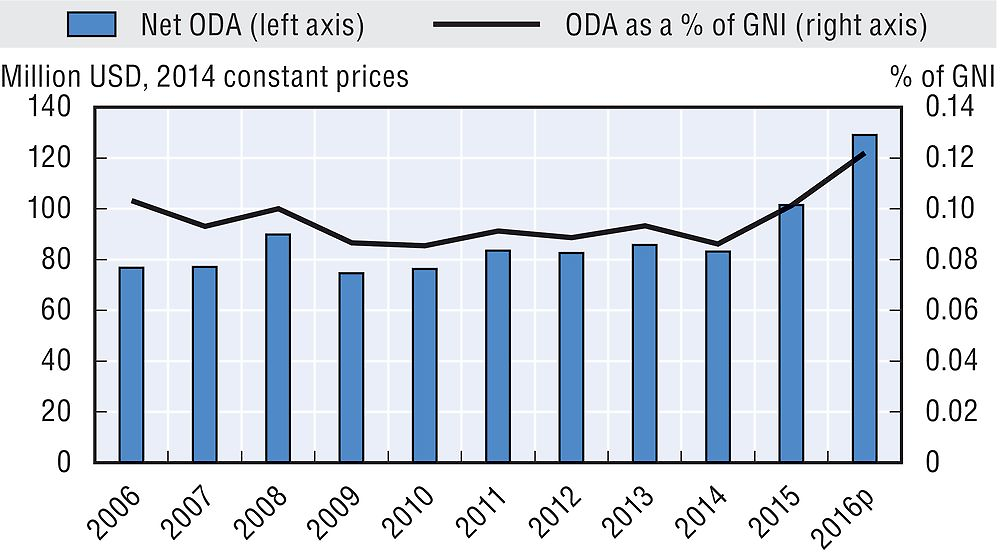
p: Preliminary data.
The Slovak Republic’s use of ODA to mobilise other resources for sustainable development
-
USD 23 300 of ODA was committed to the mobilisation of domestic resources in developing countries, e.g. to support the development of their tax systems, in 2015.
-
USD 1 million of ODA (+14.4% in real terms from 2014) was committed to promote aid for trade and improve developing countries’ trade performance and integration into the world economy in 2015.
The Slovak Republic’s performance against commitments for effective development co-operation
The Slovak Republic’s official development assistance
In 2015, 20.3% of the Slovak Republic’s ODA was provided bilaterally, while 79.7% of total ODA was allocated as core contributions to multilateral organisations (above the DAC country average of 26.2%). The major share of its multilateral aid (89%) went to fulfil its assessed contribution to the EU (including the European Development Fund). It also contributed to several other international organisations, notably the European Investment Bank, the United Nations system and the World Bank Group. In addition, it channelled 20.3% of its bilateral ODA to specific projects implemented by multilateral organisations (multi-bi/non-core contributions).
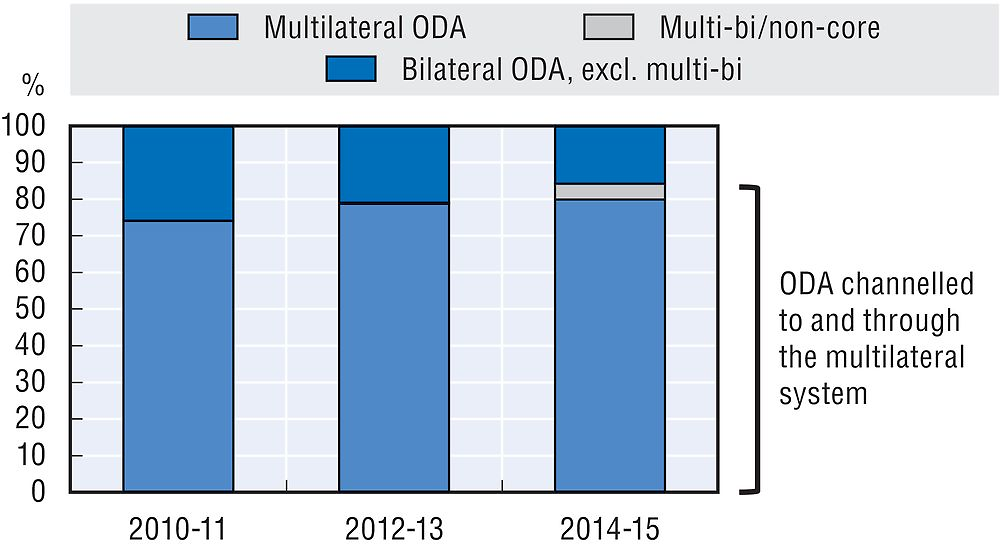
In 2015, 47.7% of bilateral ODA was programmed with partner countries. The Slovak Republic’s share of country programmable aid was close to the DAC country average (48.8%) in 2015 and project-type interventions made up 47.9% of this aid. Fifteen per cent of bilateral ODA was classified as “other and unallocated”.
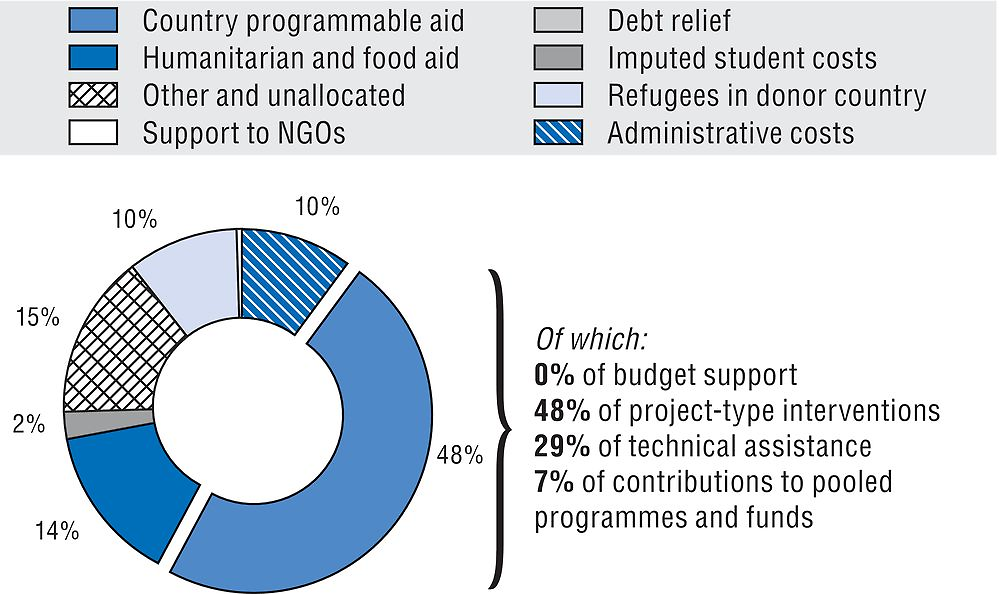
In 2015, USD 3.7 million of bilateral ODA was channelled to and through civil society organisations (CSOs). Slovak ODA to and through CSOs increased between 2014 and 2015, both in volume (+54%) and as a share of bilateral aid (from 17.6% to 21.6%). The DAC average was 16.9% in 2015.
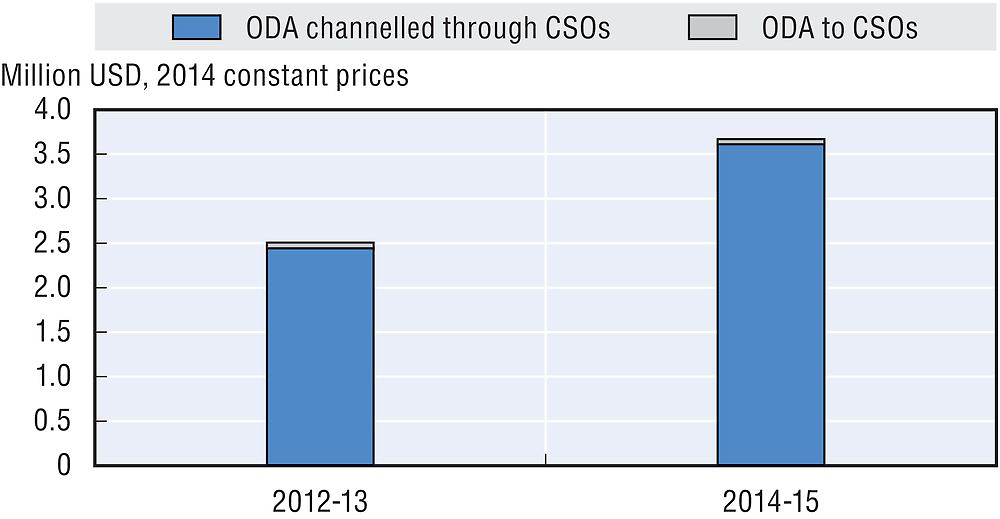
Bilateral ODA was primarily focused on Eastern Europe. In 2015, USD 7 million was allocated to Eastern Europe, USD 1.6 million to sub-Saharan Africa, and USD 0.9 million to south and central Asia.
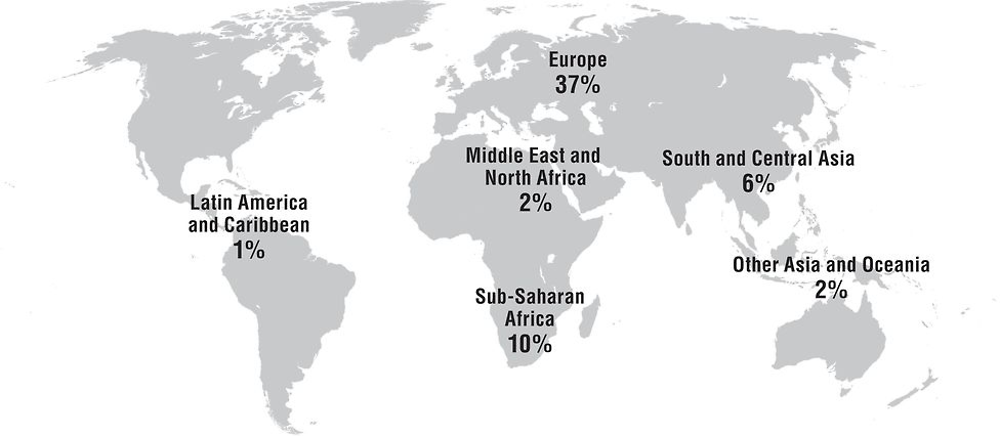
Note: 42% of bilateral ODA allocated was unspecified by region in 2014-15. This share is not represented on the map.
In 2015, 46.1% of bilateral ODA went to the Slovak Republic’s top 10 recipients. It focuses on ten priority partners, of which there are three programme countries (Afghanistan, Kenya, Moldova), six project countries (Albania, Belarus, Bosnia and Herzegovina, Georgia, Kosovo, Ukraine) and South Sudan. Nine priority countries are among its top 10 recipients. In 2015, its support to fragile contexts reached USD 2.5 million (14.3% of gross bilateral ODA).
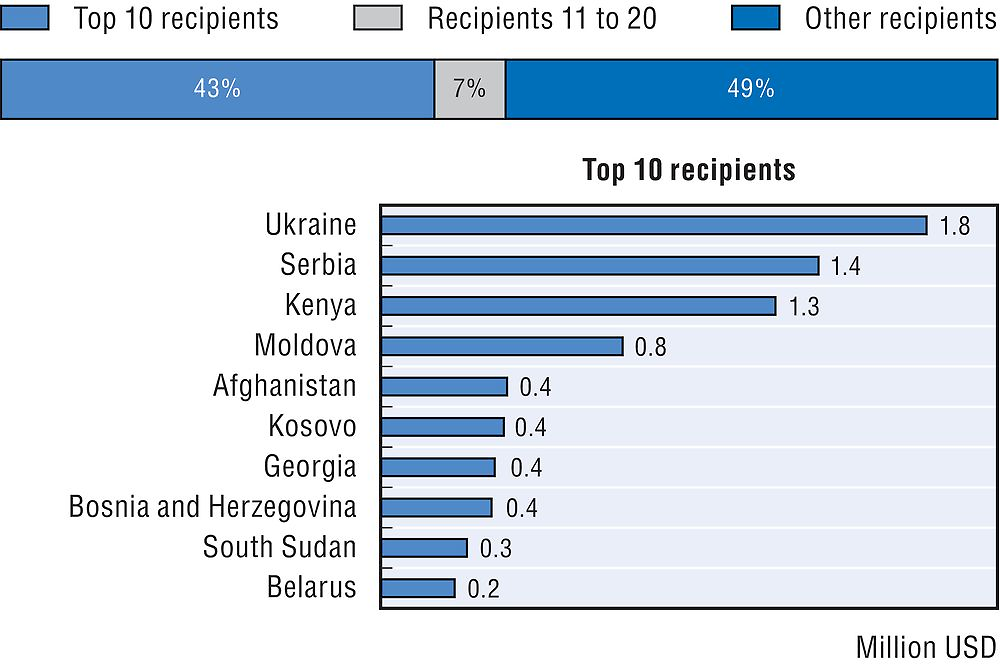
In 2015, 5.4% of bilateral ODA was allocated to least developed countries (LDCs), amounting to USD 0.9 million. This is a decrease from 20.6% in 2013 and 7.1% in 2014 and is lower than the 2015 DAC average of 24.3%. Lower middle-income countries received the highest share of bilateral ODA in 2015 (26%), noting that 45.3% of bilateral aid is unallocated by income group.
At 0.02% of GNI in 2015, total ODA to LDCs was below the UN target of 0.15% of GNI.
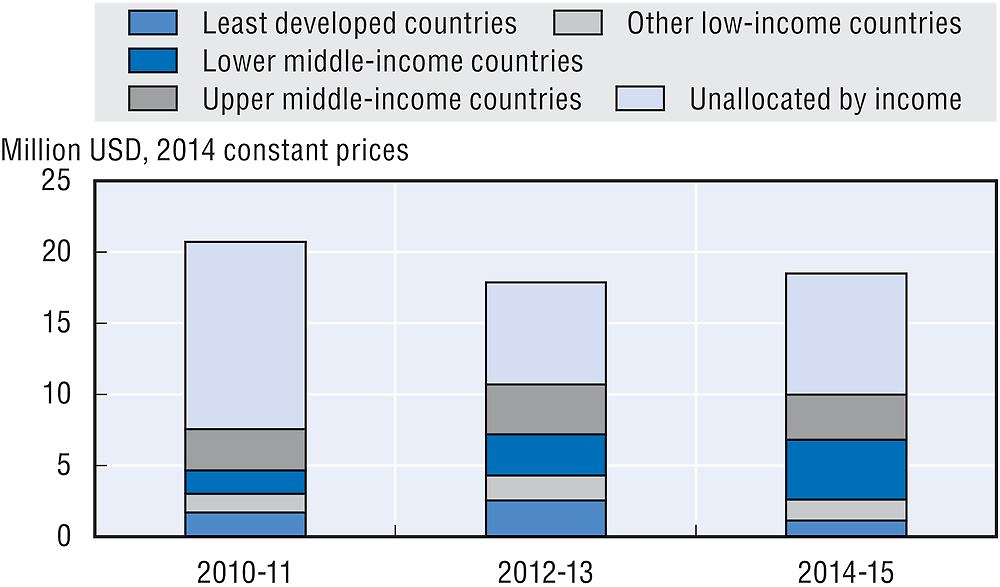
In 2015, 55.5% of bilateral ODA (USD 10.5 million) was allocated to social infrastructure and services, with a strong focus on education (USD 4.1 million) and support to government and civil society (USD 5 million). Humanitarian aid amounted to USD 2.5 million. The Slovak Republic’s bilateral co-operation focuses on seven areas: education, healthcare, good governance and building of civil society, agriculture and forestry, water and sanitation, energy, and support to economic development. Priority sectors of engagement are identified in the country strategy papers for programme countries. The Slovak Republic will support sectors in its “project” countries on the basis of the diverse needs of the countries undergoing transformation and on the Slovak Republic’s own experience.

USD 0.1 million of bilateral ODA supported gender equality in 2015. The Slovak Republic recognises that gender equality and women’s empowerment are crucial for eradicating poverty and promoting economic growth and social development. It plans to mainstream gender equality into its development co-operation programme. In 2015, 0.6% of Slovak bilateral allocable aid had gender equality and women’s empowerment as a principal or significant objective, compared with 2.4% in 2014 and the DAC country average of 36.3%.
USD 2.1 million supported the environment in 2015. The Slovak Republic is increasingly integrating the environment and climate change into its development co-operation, in accordance with its commitments to mitigation, adaptation and protection of biodiversity. In 2015, 14.5% of its bilateral allocable aid supported the environment and 2% (USD 0.3 million) focused specifically on climate change, compared with the respective DAC country averages of 33.2% and 26.2%.
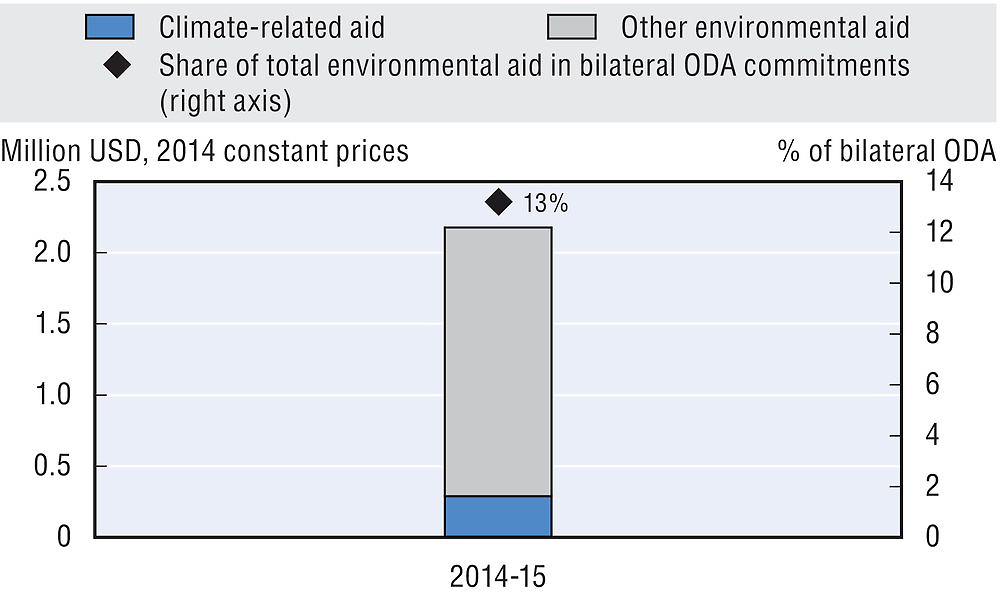
Note to reader: Annex B provides “Methodological notes on the profiles of Development Assistance Committee members”.
